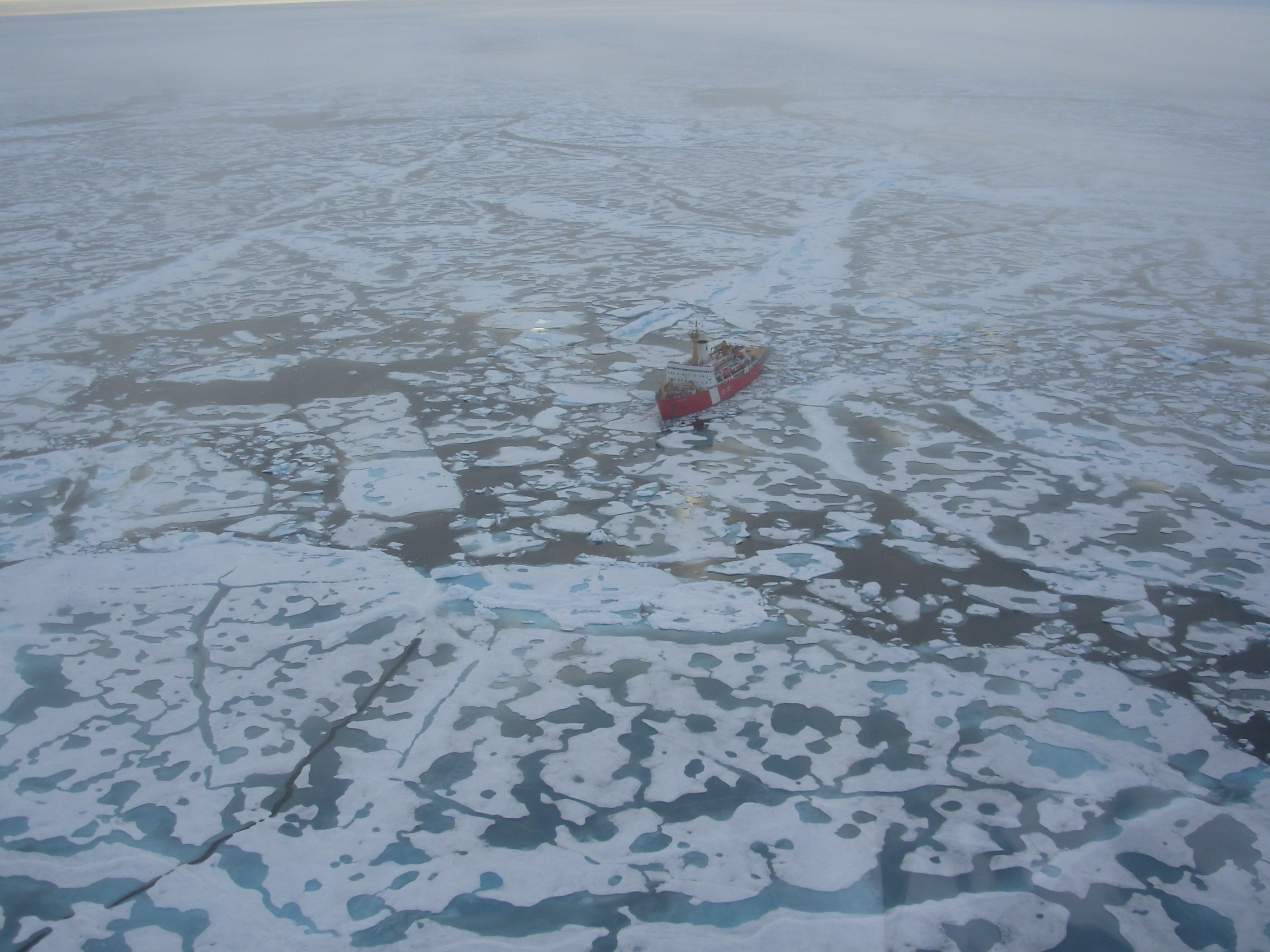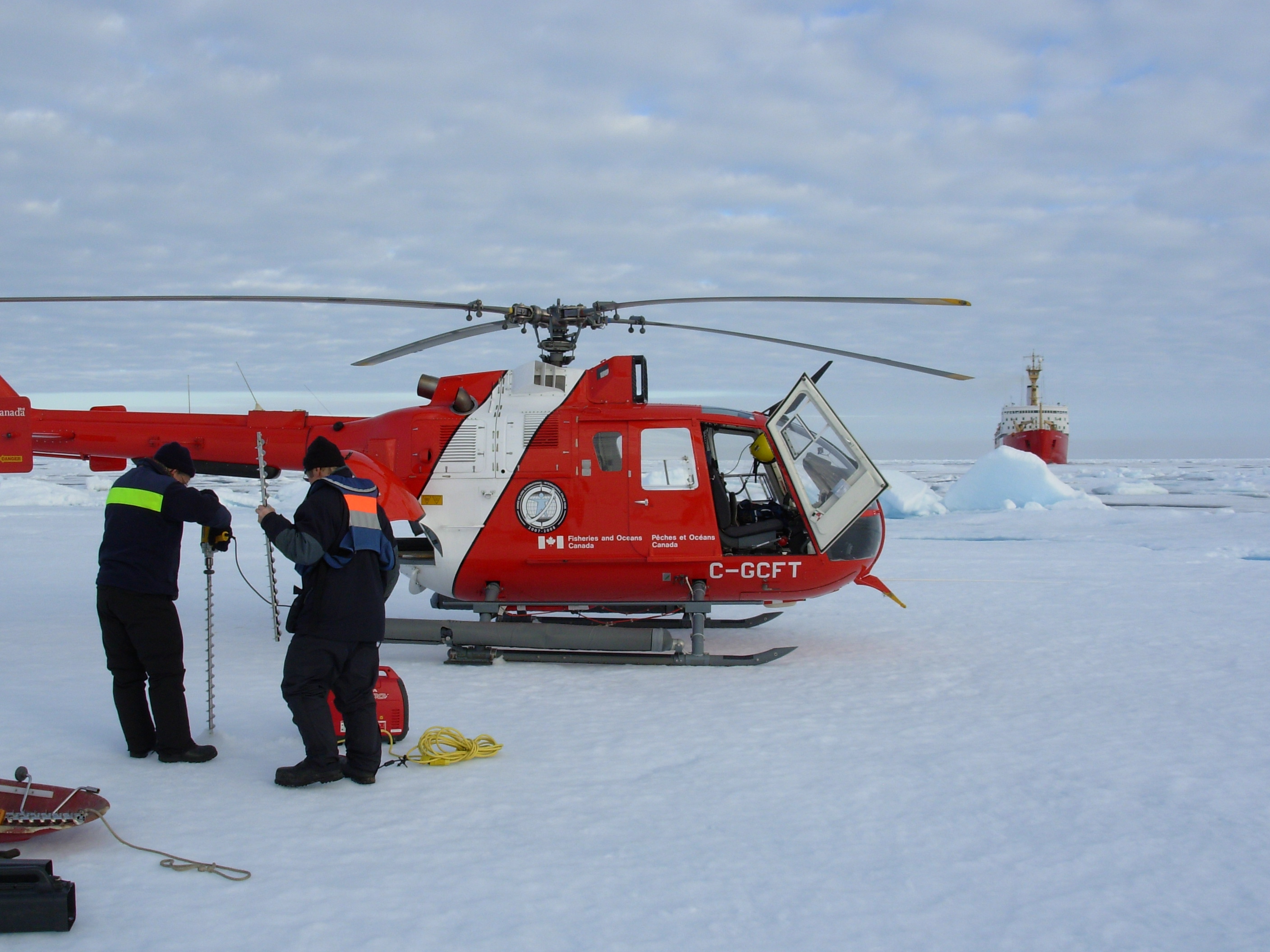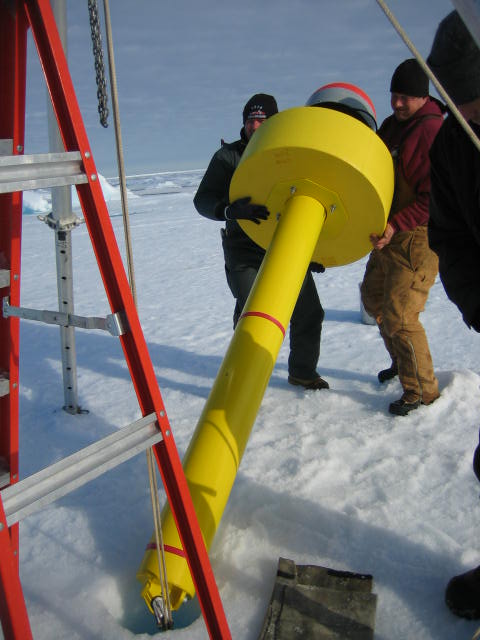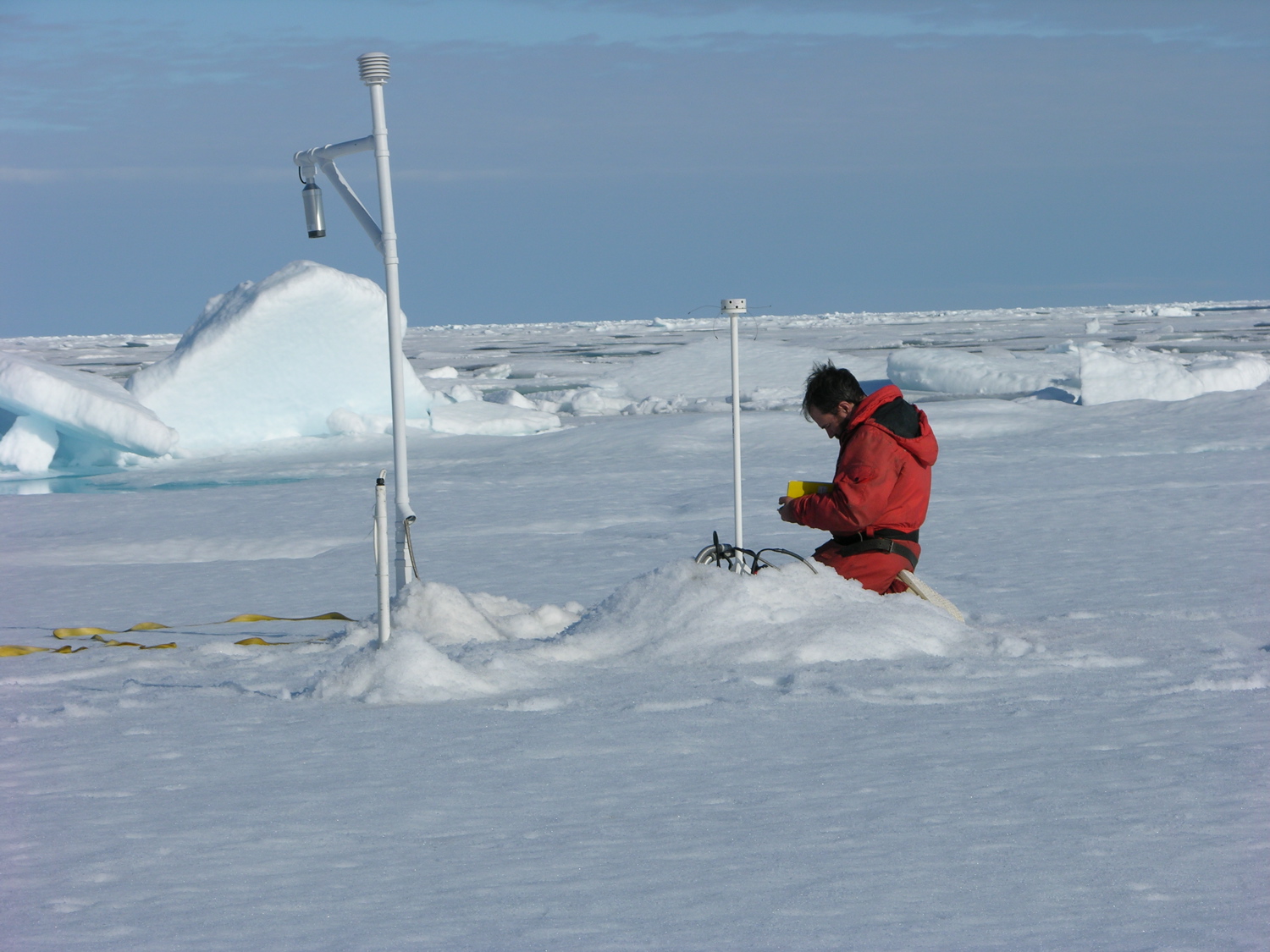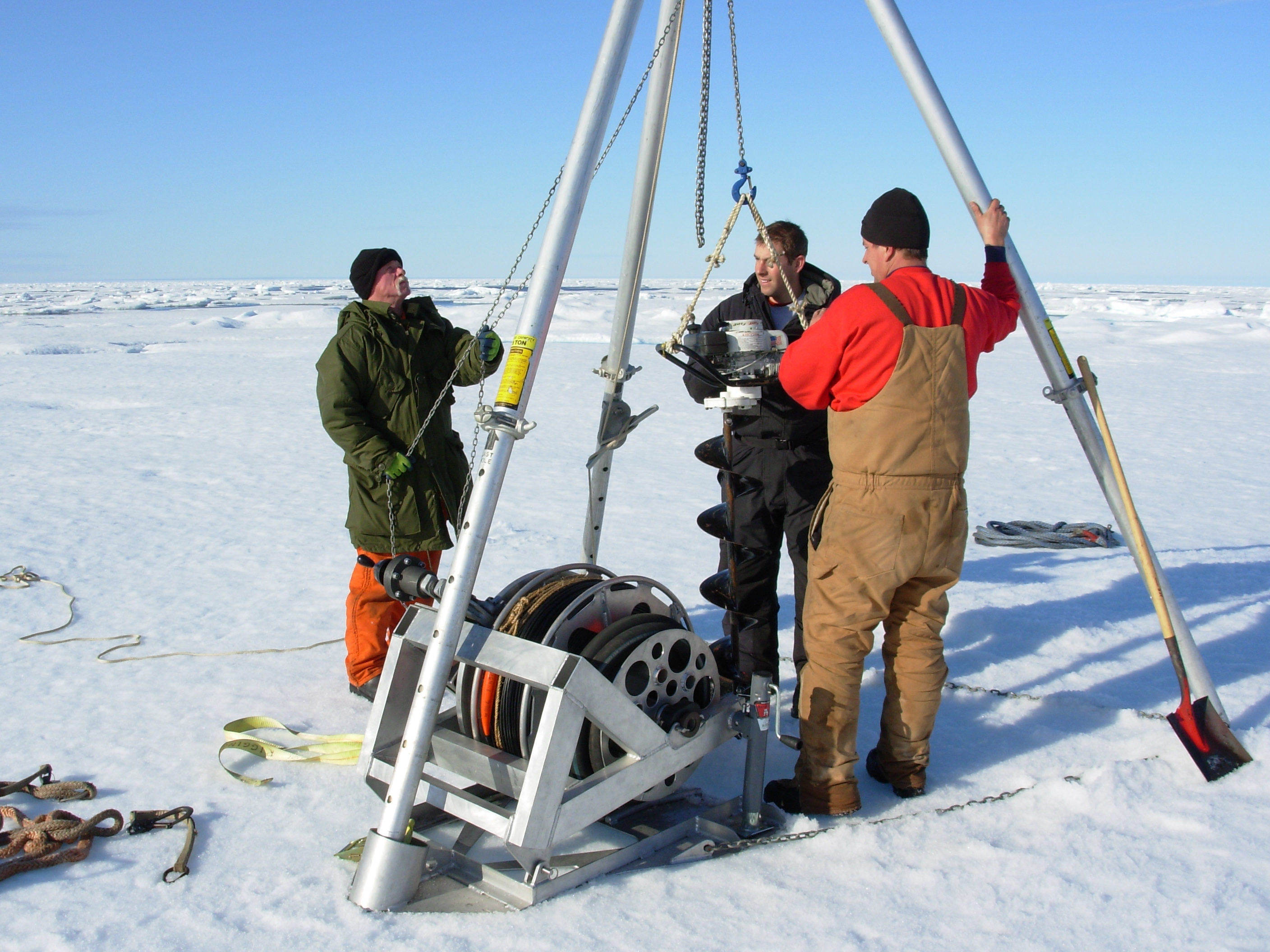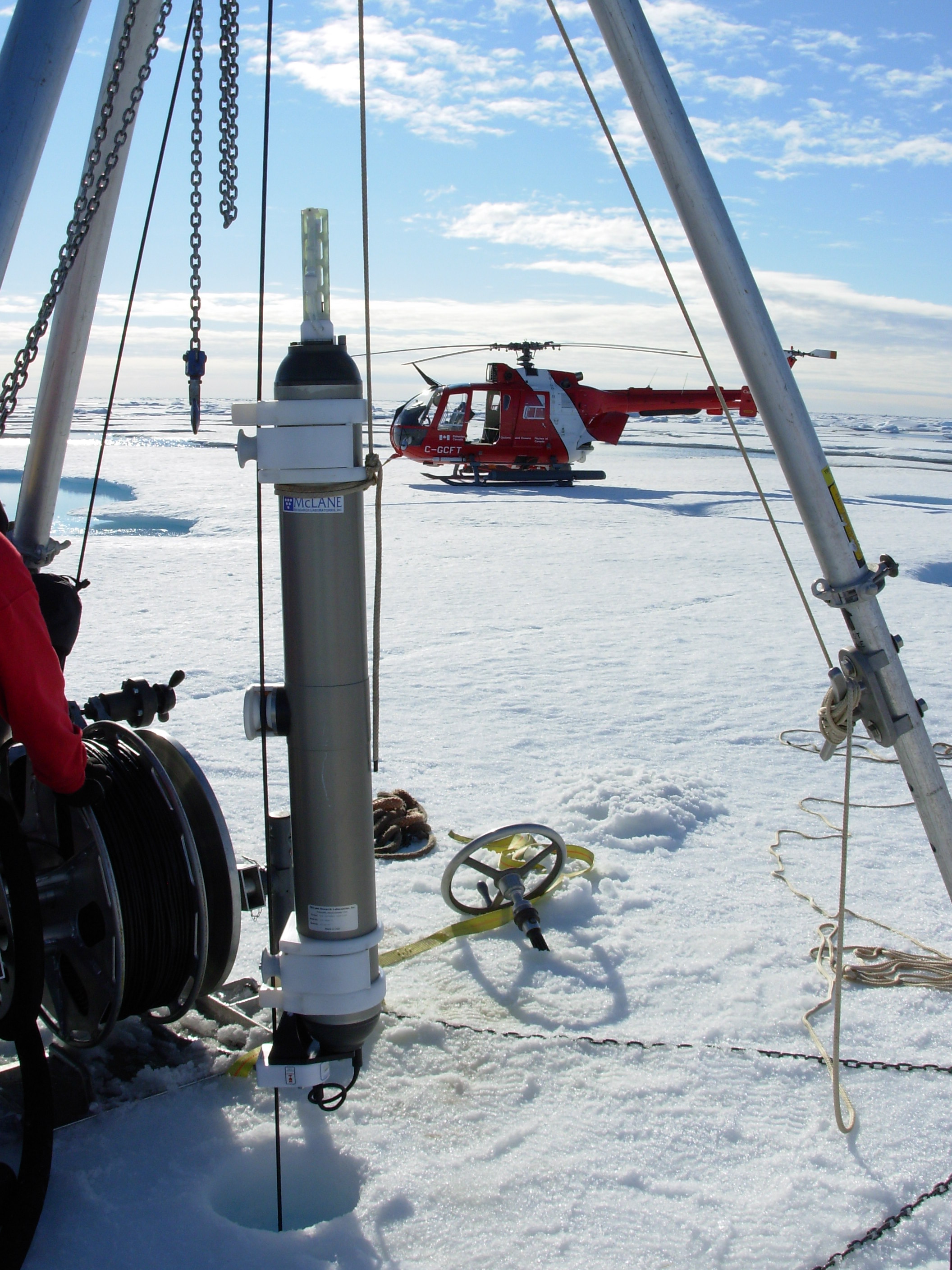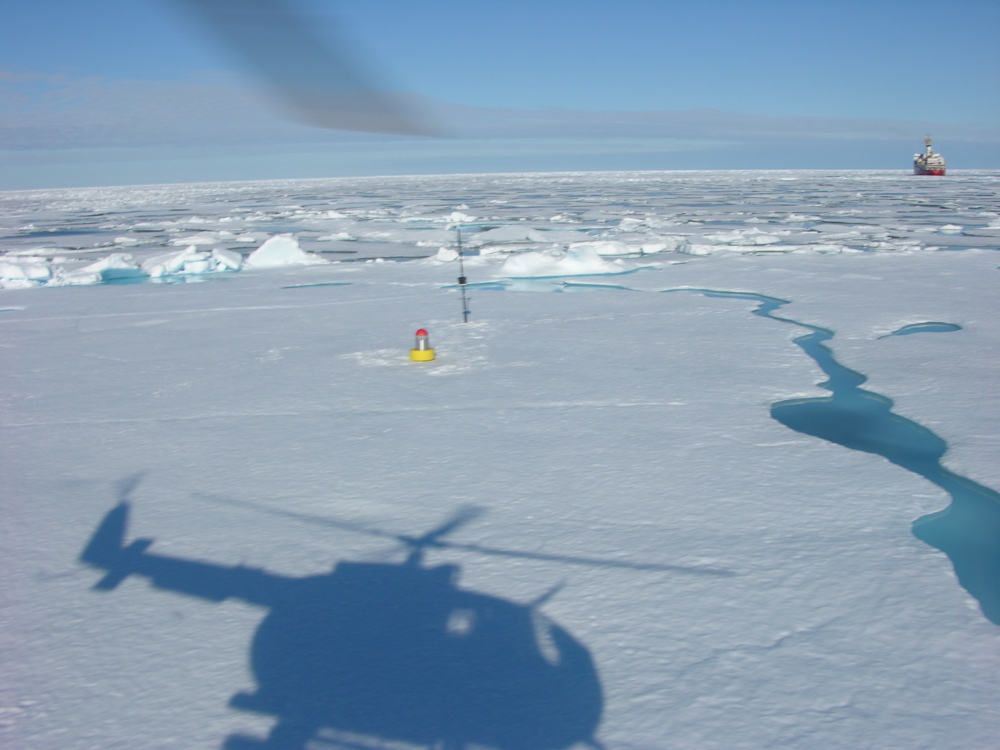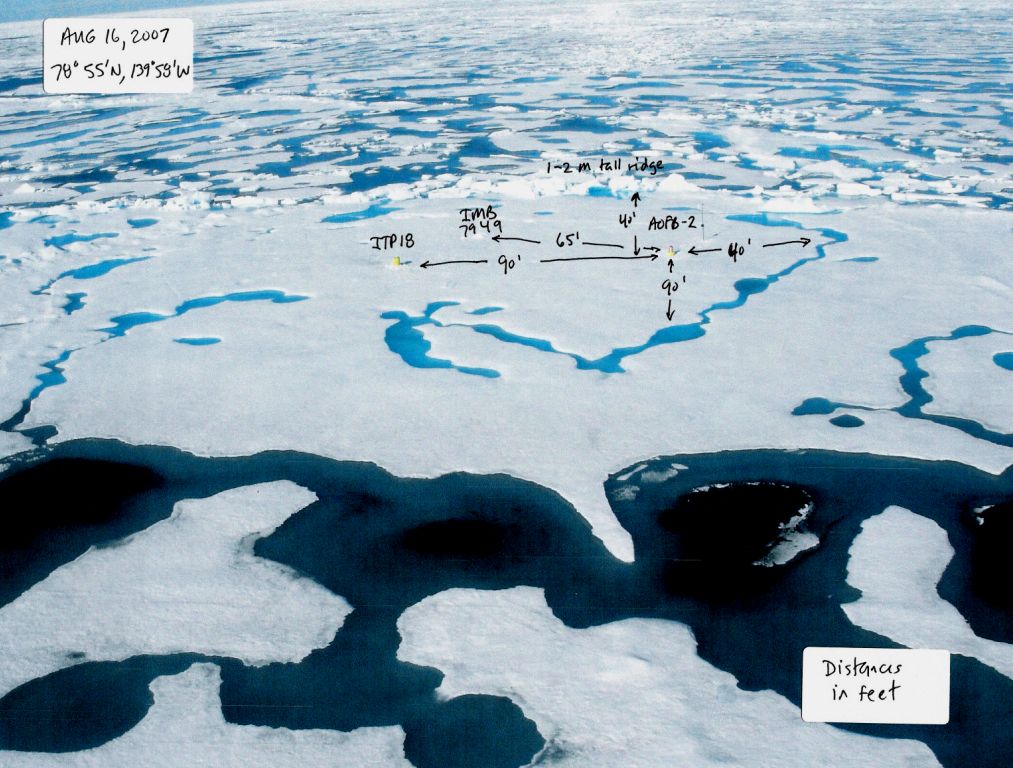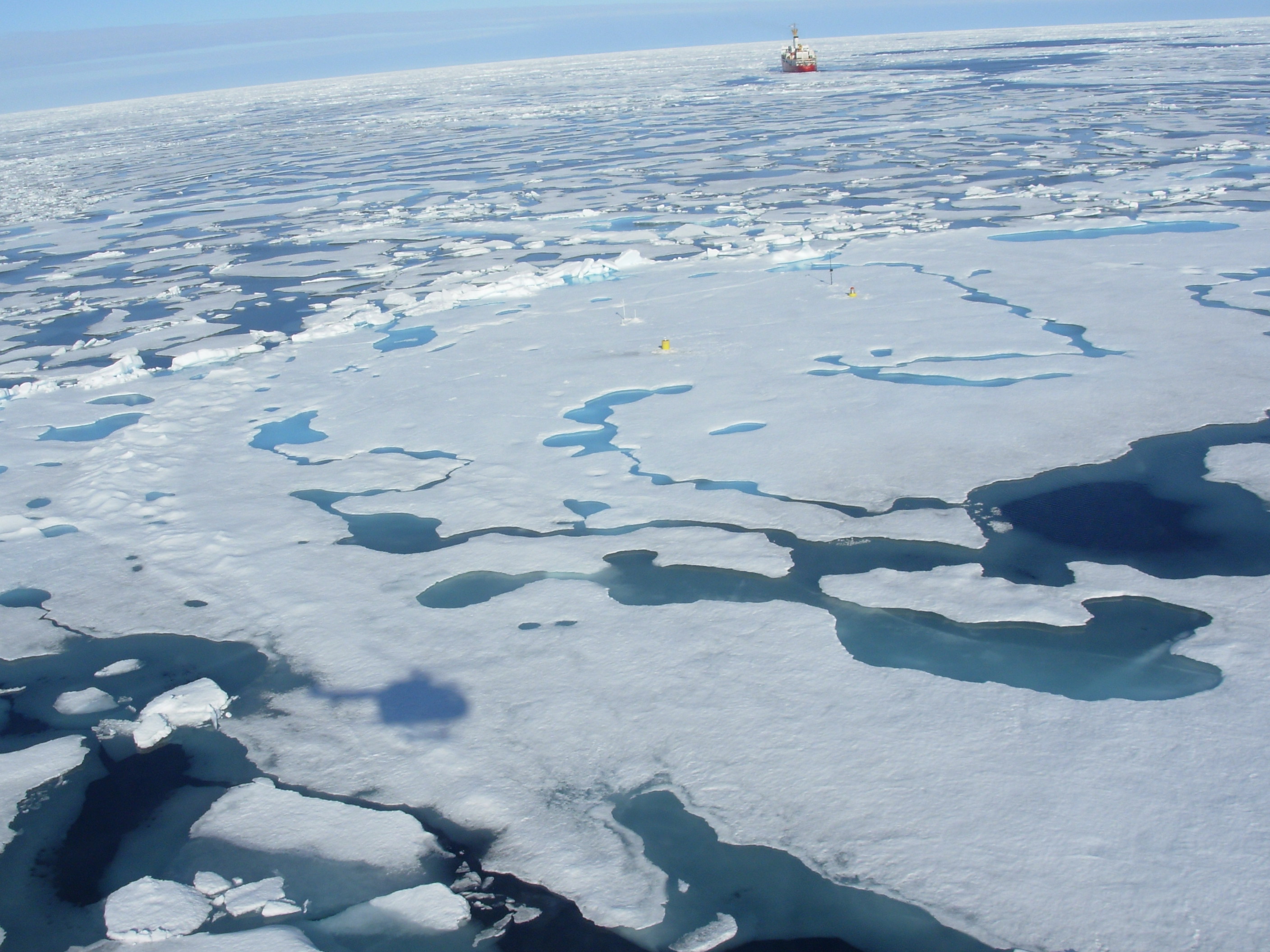ITP18 Deployment Operations
In order for the last day of ice operations to be successful, a better-than-average ice floe was needed to act as the platform for a buoy cluster consisting of an AOFB, IMB, and ITP 18. Fortunately, the ice in the northeast Beaufort Sea contained more patches of remnant multiyear ice patches compared to the thin ice encountered previously to the west. After searching in the helicopter for only half an hour, an outstanding ice floe was spotted and when drilled showed a relatively uniform thickness around 3 m. The site was so close to the ship, that only an hour later, the first personnel and gear were delivered for the deployment. Another hour, and all 16 personnel (including rifle bearer, photographers, and other ice surveyors besides the buoy deployment team) and gear were delivered to the ice and the AOFB sensor head was being lowered through the 10.5 inch hole into the seawater. Meanwhile, the IMB was being installed 20 m away. Half an hour later, the AOFB surface buoy was deployed and the ITP deployment started near the IMB while the AOFB ice thermistor string was installed and operation of the buoy and wind generator were verified. Two hours were consumed by the ITP deployment, and then all personnel and gear were returned to the ship exactly 7 hours after the first deployment flight from the ship. Good weather contributed to the efficiency of the field work.
More information and photos on the deployment operation are also available at: https://www.whoi.edu/page.do?pid=67521.
